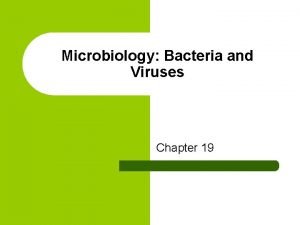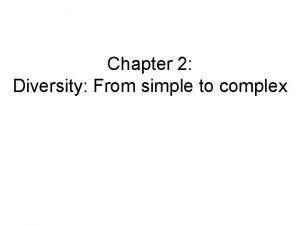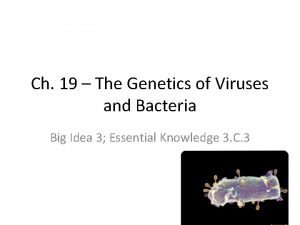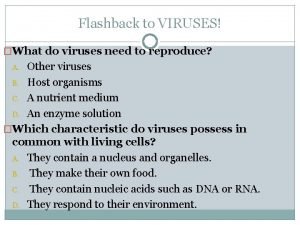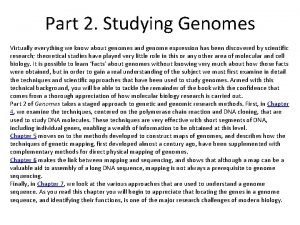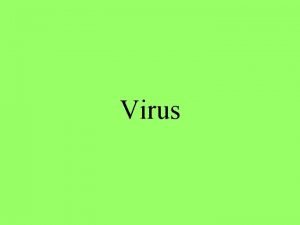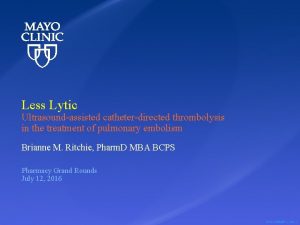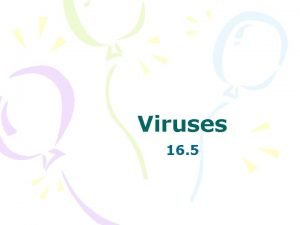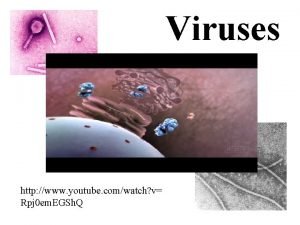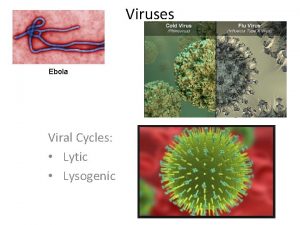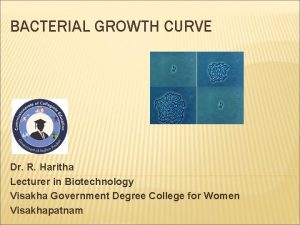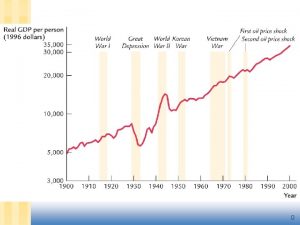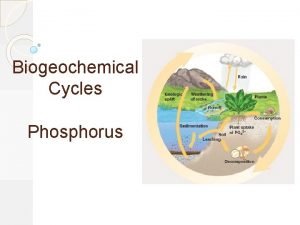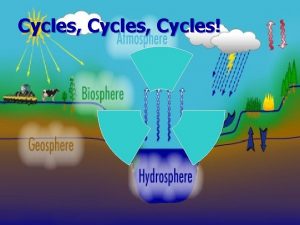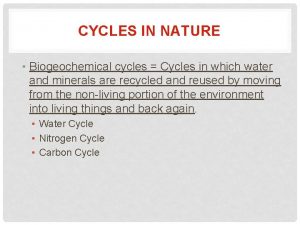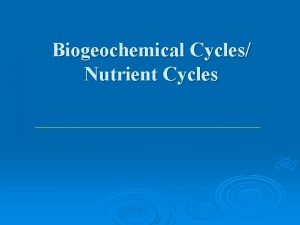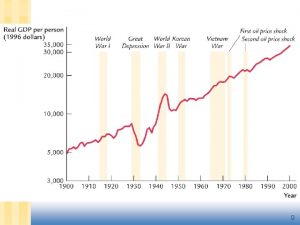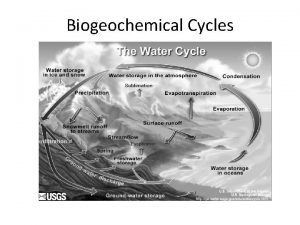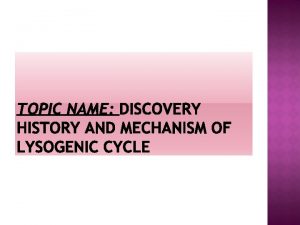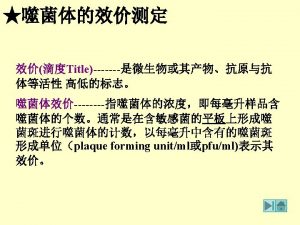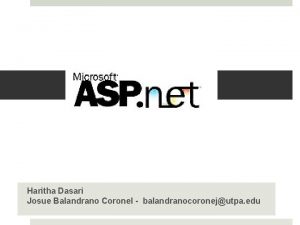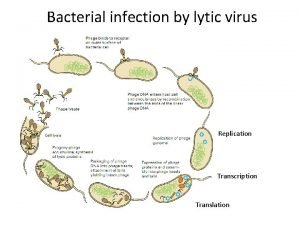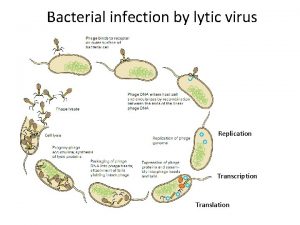LYTIC AND LYSOGENIC CYCLES Dr R Haritha Lecturer




























- Slides: 28

LYTIC AND LYSOGENIC CYCLES Dr. R. Haritha Lecturer in Biotechnology Visakha Government Degree College for Women Visakhapatnam

BACTERIOPHAGES Head/Capsid Definition Composition Structure Significance Contractile Sheath Tail Fibers Base Plate

Types of Bacteriophages Lytic or virulent phage: Phage that can only multiply within bacteria and kill the cell by lysis. (e. g. , T 4) Lysogenic or temperate phage: Phage that can either multiply via the lytic cycle or integrate into the bacterial cell genome. (e. g. , Lambda)

LYTIC CYCLE ◦ Attachment ◦ Penetration ◦ Biosynthesis ◦ Maturation ◦ Release

Attachment Proteins on viral surface attaches to the specific receptors on the cell wall of the bacterium.

Penetration The viral genome (DNA or RNA) enters into the cytoplasm of the host cell. This step is also known as ‘Entry’.

Biosynthesis Viral DNA is transcribed and then translated by the host cell.

Maturation The viral protein parts produced are then assembled together while still inside the host cell.

Release The fully formed virions burst from the host cell by lysing it.

http: //www. youtube. com/watch? v=w. Vk. Cy. U 5 aee. U&NR=1 <ul><li>Lytic Cycle Video Clip </li></ul>

LYSOGENIC CYCLE ◦ Attachment ◦ Penetration ◦ Prophage ◦ Cell division ◦ Biosynthesis ◦ Maturation ◦ Release

Attachment Proteins on viral surface attaches to the specific receptors on the cell wall of the bacterium.

Penetration The viral genome (DNA or RNA) enters into the cytoplasm of the host cell. This step is also known as ‘Entry’.

Prophage The viral DNA is inserted into the bacterial chromosome - Provirus / Prophage

Cell Division The provirus/prophage is replicated along with the bacterial DNA during mitosis.

Spontaneous Induction The provirus separates from the host chromosome. And the virus will complete the steps of the lytic cycle.

Biosynthesis & Maturation Viral DNA is transcribed and then translated by the host cell. The viral protein parts produced are then assembled together while still inside the host cell.

Release The fully formed virions burst from the host cell by lysing it.

<ul><li>Lysogenic Video Clip </li></ul><li>http: //www. youtube. c om/watch? v=_J 9 -x. Kitsd 0&NR=1 </li></ul>

LYTIC VS LYSOGENIC CYCLE

Advantages & Limits Lytic Cycle Lysogenic Cycle Replication More of new viruses is fast. However, the host is also immediately killed preventing the viral genome from passing onto the next generation of host cells no. viruses can be made because the viral genome is passed onto future generation of host cells. However, replication takes longer because it is dependent on the host cell’s replication


Bacteriophages are. . . A Bacteria that attack Virus B Free living virus C Virus that attack Bacteria D Virus that attack Protozoa

Which of the following is a bacteriophage? A Pox C Lambda B TMV D Retro virus

Bacteriophages undergo replication by. . . . A B Binary Fission Fragmentation C Conjugation D Lytic & Lysogenic cycle Cycle

The viral genome integrated into the bacterial genome is called. . . A Virion C Prophage B Plasmid D Capsid

Lysogenic strains are also called as. . . A Temperate Phages B Lytic Phage C Virulent Phage D none of these

 Lytic and lysogenic cycle similarities
Lytic and lysogenic cycle similarities Biology second semester final exam answers
Biology second semester final exam answers Introduction of bacteria
Introduction of bacteria Youtube . com / watch v = roxnvcaezjs
Youtube . com / watch v = roxnvcaezjs Is the zika virus lytic or lysogenic
Is the zika virus lytic or lysogenic Youtube
Youtube Lecturer's name
Lecturer's name Lysogenic viruses do not
Lysogenic viruses do not Homopolymer tailing
Homopolymer tailing Lytic cycle comic strip
Lytic cycle comic strip Lytic cycle
Lytic cycle Lytic catheter
Lytic catheter Lytic infection
Lytic infection Watch?v=-7j_y0pdelc
Watch?v=-7j_y0pdelc Physician associate lecturer
Physician associate lecturer Spe distinguished lecturer
Spe distinguished lecturer Good afternoon dear students
Good afternoon dear students Photography lecturer
Photography lecturer Lecturer in charge
Lecturer in charge Designation lecturer
Designation lecturer Designation of lecturer
Designation of lecturer Why himalayan rivers are pernnial in nature
Why himalayan rivers are pernnial in nature Lecturer name
Lecturer name Pearson lecturer resources
Pearson lecturer resources Spe distinguished lecturer
Spe distinguished lecturer Lector vs lecturer
Lector vs lecturer Lecturer in charge
Lecturer in charge Cfa lecturer handbook
Cfa lecturer handbook Lecturer asad ali
Lecturer asad ali
